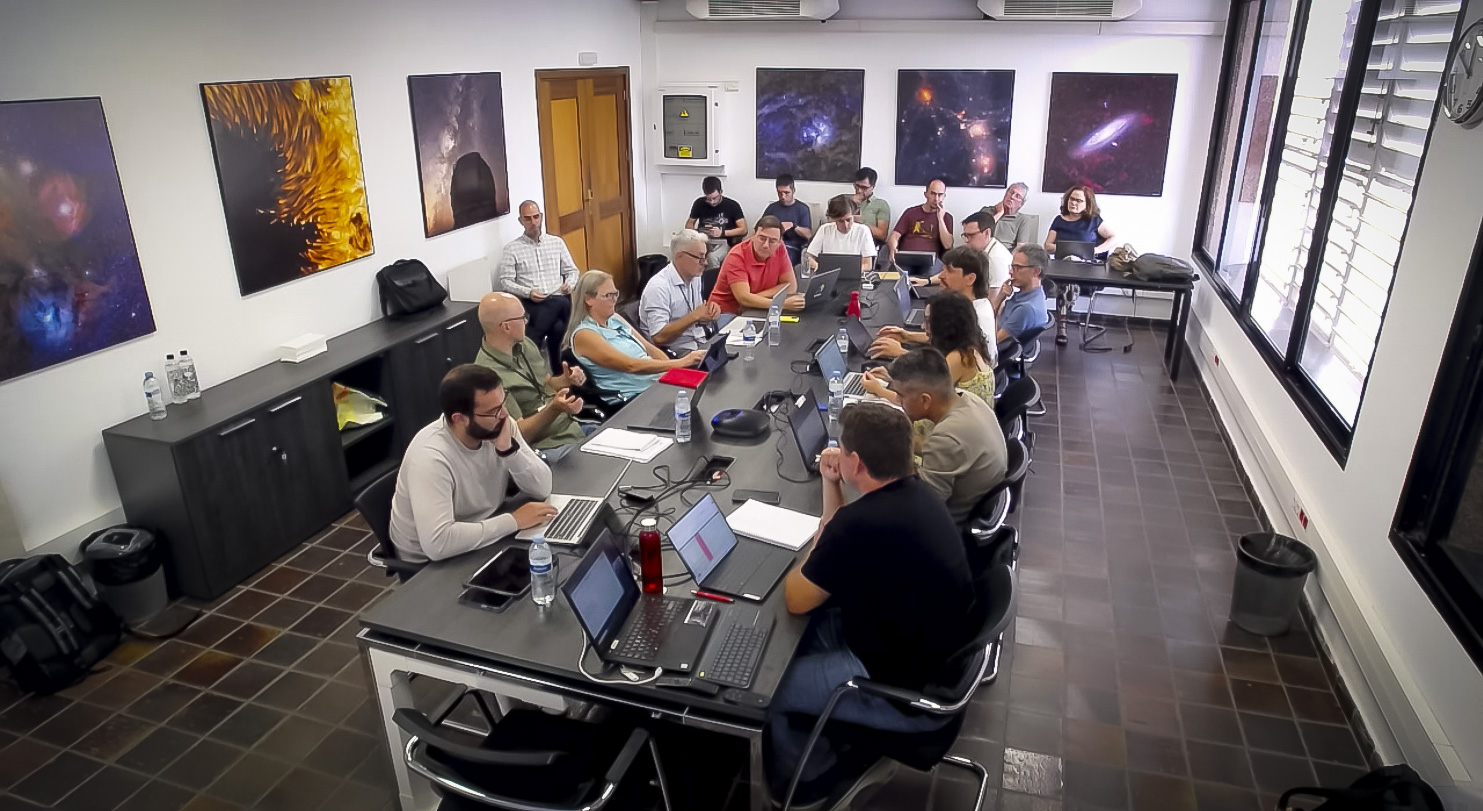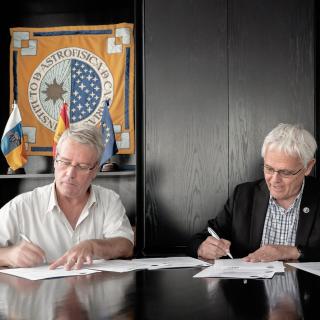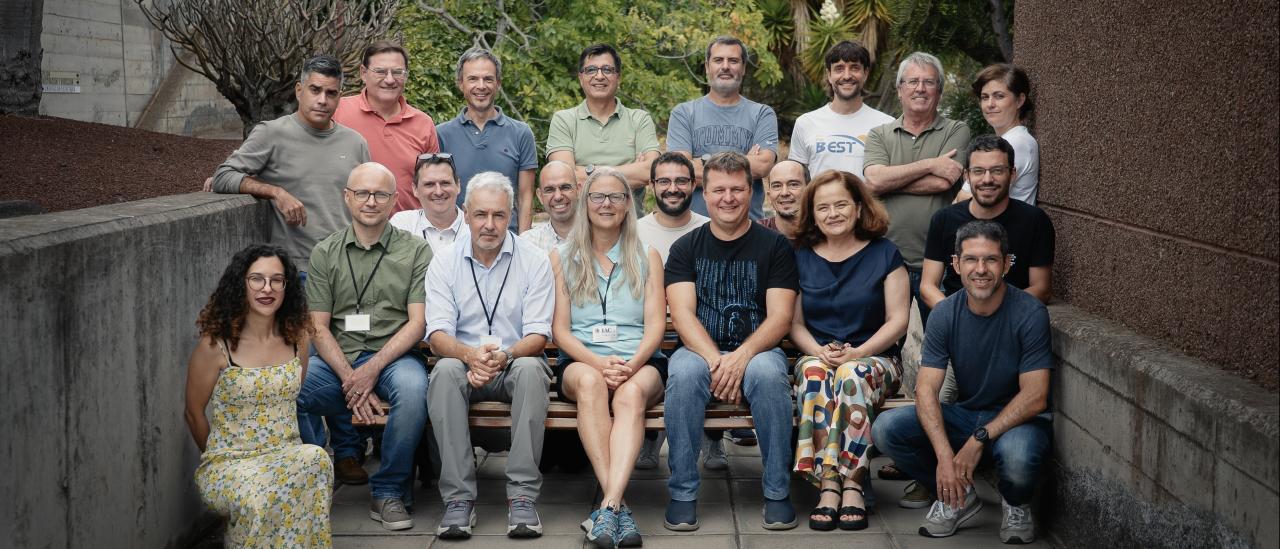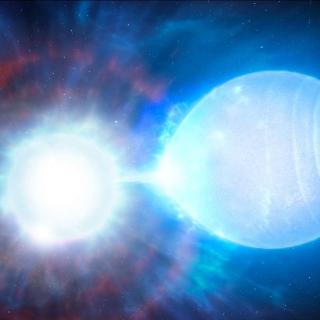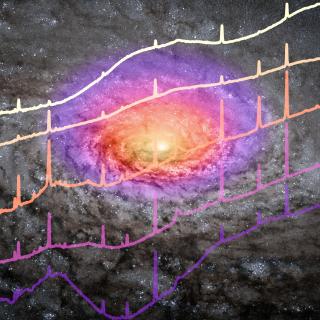A crucial step forward has been taken in the development of the European Solar Telescope (EST). The preliminary design of three core software systems— the Control System, the Adaptive Optics Real-Time Controller (AO RTC), and the Data Centre — has passed a rigorous international review, confirming their readiness to move into the next phase of development.
In early July, the EST software engineering team submitted a detailed set of design documentation for evaluation as part of the Software Preliminary Design Review (SPDR), focusing on the telescope’s Control System, including Adaptive Optics Real-Time Control System (AO RTC) and Data Centre. This initiated a comprehensive review process, culminating in a face to face meeting held at the IAC headquarter in La Laguna on July 21, 22 and 23, 2025.
The review panel, chaired by José Manuel Filgueira (Giant Magellan Telescope), included Bret Goodrich (Daniel K. Inouye Solar Telescope), Jennifer Dunn (NRC-Herzberg Astronomy and Astrophysics Research Centre), and Gareth Hughes (Cherenkov Telescope Array Observatory). The sessions brought together specialists from across the EST project, researchers from Durham University, and members of the EST Scientific Instrument Suite.
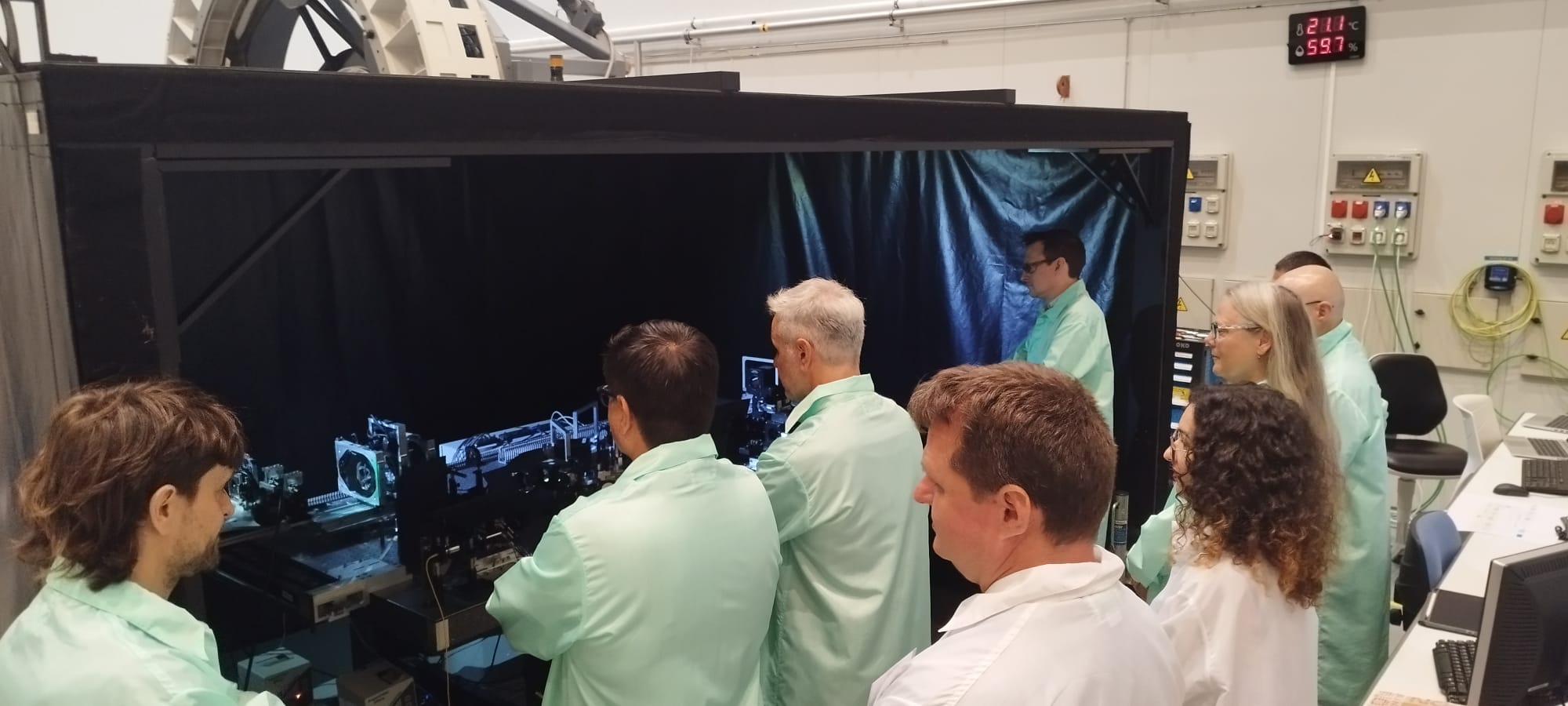
Over three days of intense technical discussions, the panel scrutinised the designs and questioned the team on key aspects of the systems’ architecture, integration and feasibility. Their final verdict: the Control System, AO RTC and Data Centre meet the standards expected at the preliminary design stage. The panel delivered a positive final report and praised the quality of the work, highlighting the strong documentation and clear, comprehensive presentations delivered by the EST team.
The committee recognised that the design of the EST Control System, Data Centre and AO RTC successfully meets the criteria to be considered at preliminary design level. This opinion was assuming that all the Review Item for Examination (RIXs) with their recommended actions are addressed. As is standard practice in such reviews, the panel also identified areas for further refinement. These include the need for a comprehensive security plan for the Control System, the finalisation of the design work package for the Soft Real-Time Controller (SRTC) in the AO RTC, and more detailed modelling of data flow and storage structures within the Data Centre
Despite these challenges, the outcome of the review was overwhelmingly positive — a testament to the progress made by the EST engineering teams and a clear signal that the project is on track. With this milestone reached, EST continues to move closer to its goal: constructing the most advanced solar telescope ever built in Europe, capable of observing the Sun with unprecedented clarity and precision.
